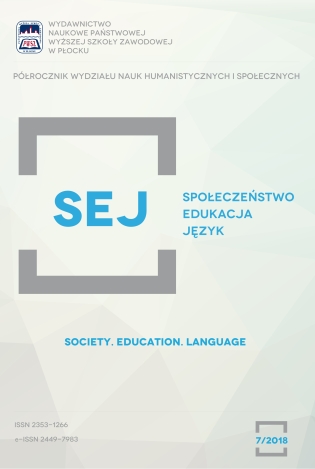The Box-Assemblage as Exilic Space
Abstract
DOI: 10.19251/sej/2018.7(9)
This presentation revolves around my box-assemblage, a three-dimensional body-themed artefact whose iconography is imbued with liturgical as well as profane tropes. I demonstrate how this artefact provides the female model and myself with an exilic space within which we not only re-assess concepts of alterity and subjectivity, but challenge the dominant role of male subjectivity in the western world. Its creation, a collaborative endeavour prompted by our desire to create an exclusive realm where libidinal desires are freed from societal inhibitions, starts off with our encounters in my studio. Parts of the latter’s space are then transferred into the artefact itself, together with our metonymic presences in the form of relics and simulacra of our bodies-in-pieces. The box-assemblage engenders an exilic space within itself, one characterised by liminality and in-betweenness; positioned between the sacred and profane, the tangible and intangible.
By correlating her body with the divine, the box-assemblage gives this woman, as an embodiment of what I consider to be the “true other”, a trans-corporeal identity. Rather than controlling the other, the artefact provides an indeterminate space wherein the self encounters the other in a manner that initiates an equitable relationship, unhindered as much as possible by presumptive knowledge. This is aided by the box-assemblage’s underlying esthetics and dynamics which, while encouraging gender fluidity and disengagement from preconceived dogmas—a sort of reverse cognition—also enhances the experience of its deific symbolism. Ultimately, it allows us to speak through our bodies, transforming itself into a meta-narrative of our shared existences.
Keywords: alterity, box-assemblage, divinity, exilic, femininity, selfhood, transcendence
References
References:
Bynum Caroline Walker. 1991. Fragmentation and redemption. New York: Zone books.
Bynum Caroline Walker, Paula Gerson. 1997. “Body-part reliquaries and body parts in the Middle Ages”. Gesta Vol 36, no 1.
Ferrari Danyel M R, Valentina A Spalten. 2011. Fragment/ composite. In Objects of devotion and desire (online catalogue). Ed. Hahn Cynthia. The Bertha and Karl Leubsdorf art gallery.
Gosden Chris. 2004. Making and display: our aesthetic appreciation of things and objects. In Substance, memory, display: archaeology and art, ed. Renfrew Colin, Chris Gosden, Elizabeth DeMarrais. Cambridge: McDonald institute for archaeological research. 2004.
Griffiths Jennifer. 2013. “Erotically engaged: Olga Carolina Rama’s politically defiant bodies”. Women’s studies quarterly. Vol 41. No 3/4. Fall/winter. 79-94.
Grosz Elizabeth. 1994. Volatile bodies. Bloomington: Indiana U P.
Irigaray Luce. 2004. The way of love. Trans. Bostic, Heidi and Stephen Pluhàcek. London: Continuum.
Joy Morny. 2006. Divine love: Luce Irigaray, women, gender and religion. Manchester: Manchester U P.
Kristeva Julia. 1991. Strangers to ourselves. New York: Columbia UP.
Mey Kerstin. 2007. Art & obscenity. London: IB Taurus & co ltd.
Nead Lynda. 1992. The female nude: art, obscenity and sexuality. London: Routledge.
Polinska Wioleta. 2000. “Dangerous bodies: women’s nakedness and theology”. Journal of feminist studies in religion Vol 16, no 1. Spring.
Rushdie Salman. 2010. Imaginary homelands. London: Vintage.
Said Edward W. 2000. Reflections on Exile and Other Essays. Cambridge MA: Harvard UP.
Wadley Nicholas. 1990. Stefan Themerson on fathers, wet-nurses, and wars; The poet and the angel. In Comparative criticism: Volume 12. Ed. Shaffer Es. Cambridge: Cambridge UP.
